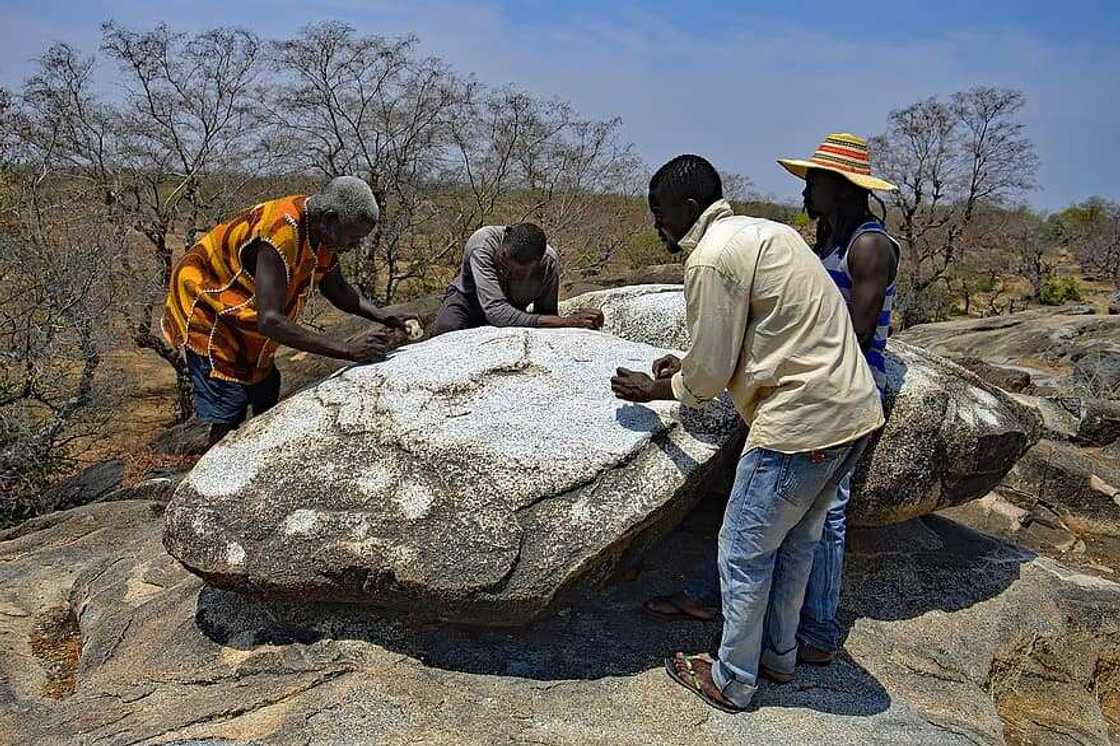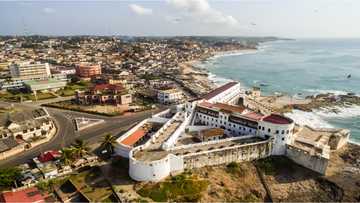Historical sites in Ghana: 10 must-see old sites and buildings in Ghana
Africa is the least developed continent, while some of the earliest civilizations can be traced back to the continent. Nevertheless, the continent has always been endowed with abundant natural, physical, and human resources. The historical sites in Ghana are a testament to what most, if not all, other African countries have to offer. Such sites range from castles to statues, libraries, and other structures.
New feature: Check out news exactly for YOU ➡️ find “Recommended for you” block and enjoy!

Source: UGC
If you are looking for places to explore in Ghana, you should ensure you have plenty of time because there are so many of those. It is a beautiful country known for its picturesque coastline, diverse animal life, lush forests and extensively rich history. In addition, the cultural heritage of the land is well-preserved thanks to its many historical sites and buildings.
Historical sites in Ghana and their regions

Read also
Famous buildings around the world like the Great Wall of China and others that were built with mud
Accra is the capital city and the most famous part of Ghana, but there are many other regions with breathtaking scenes as well. It is not just the diversity of the Ghanaian people that is fascinating but also the heritage associated with them. Below are the top historical tourist sites in Ghana to visit:
1. Jenini – Jaman North District

Source: UGC
PAY ATTENTION: Enjoy reading our stories? Join YEN.com.gh's Telegram channel for more!
The Jenini slave camp was established during the reign of Samory Toure from c. 1870 to 1895 AD. Samory Toure was a Mandinka warrior who resisted French colonization during the nineteenth century. There are many other historical locations in Ghana, like Jenini, where enslaved people were held.
This historical site provides a bold reminder of the involvement of Africa in the trans-Atlantic slave trade. People were captured from different areas and taken to Jenini and other slave camps. As a result, the area has several mass graves, some of which have been excavated while others remain undisturbed.

Read also
Endangered buildings like Mosque City of Bagerhat, La Maison du Peuple, and others that need immediate attention
2. Kwame Nkrumah Memorial Park – Downtown Accra

Source: UGC
This is the most popular of all monuments in Ghana and is found in Accra city. It was built in honour of former president Kwame Nkrumah, the country's founding father. It stands on the site of the former British colonial polo grounds.
The mausoleum was dedicated in 1992 after being designed by Don Arthur. It houses the bodies of Kwame Nkrumah and his wife, Fathia Nkrumah. This place is special in the history of Ghana because it is where Nkrumah declared the country's independence.
3. Komfo Anokye Sword Site - Kumasi
Okomfo Anokye was the first priest of the Ashanti Empire. The Komfo Anokye sword site can be found on the grounds of the Komfo Anokye Teaching Hospital in Kumasi. There is a more than 300-year-old sword wedged in the rockface.
This historical site gives insights into the beginning and expansion of the Ashanti kingdom. As a landmark, the site has been protected so as not to be destroyed. Okomfo Anokye predicted that the site would be a healing ground; hence a hospital was built there.
4. Fort Good Hope – Senya Beraku

Source: UGC
Fort Good Hope, or Fort de Goede Hoop, was a fort constructed in 1667 on the Dutch Gold Coast near Senya Beraku. The Dutch sought permission from the Queen of Agona to establish a fort at Senya Beraku. It was meant to become a centre for gold trade in the region.
Since the gold trade proved unprosperous, slaves started being sold at the fort. As a result, it was expanded to include a slave prison and a wall to surround it. It was the last fort to be built on the Gold Coast and holds a special place in the history of castles and forts in Ghana.
5. Assin Manso Slave River Site – Central Region
The Assin Manso slave river was a slave market where indigenes were gathered in the era of the trans-Atlantic slave trade. It is situated in the Central Region of Ghana, about forty kilometres on the Cape Coast-Kumasi highway. It was the final link in the slavery route from Northern Ghana.
For most enslaved people using this route, the Assin Manso slave river was where they had their last bath on African soil. It was one of the largest slave markets of the eighteenth century. Today, the place has an ancestral graveyard where people write their names to signify the discovery of their roots.
6. Gwollu Defence Wall – Upper West Region
Natives built the Gwollu Defence Wall to defend themselves against slave traders. It is found in the Upper West Region of Ghana near the Burkina Faso-Mali border. The wall was constructed in the 19th century by Gwollo Koro Limann.
Since the Upper West region experienced frequent and violent raids by warlords Babatu and Samori, two walls were built to protect homes and farms. It is believed that each wall took up to 25 years to be completed.
7. Ntonso Adinkra Cloth Village – Ntonso, Kumasi
Ntonso is the homeland of adinkra cloth and is the only place in Ghana where traditional adinkra is made locally from the beginning to the end. Adinkra is a famous cloth whose characteristic features include symbols and proverbial sayings.
In the old times, the cloth was worn during funerals in the Ashanti region and was traditionally black, brown and red. The site showcases various stages of adinkra production, including dye preparation, cloth dying and adinkra stamping.
8. The Traditional Buildings of the Asante Kingdom – North East Kumasi
This is the place to visit for anyone eager to see the last material remains of the great Asante civilization. The Asante traditional buildings are found to the northeast of Kumasi, representing an ancient culture that is struggling to remain relevant. The buildings are especially because of their intricate designs and decorations.
The traditional buildings include palaces, shrines, homes and mausoleums. Typically, the houses consist of four separate rectangular single-room buildings. All buildings have elaborate mural decorations with amazingly interlacing geometrical designs. The conditions of the houses show how Ghanaian culture can be preserved with government intervention.
9. Paga Nania (Pikworo Slave Camp) – Upper East Region

Source: UGC
If you have to list the major historical locations in Ghana, starting with the oldest, then Paga Nania has to be included. This slave camp was founded in 1704 and remained in operation until 1845, and is found about 3km west of Paga in the Upper East Region of Ghana.
The Pikworo slave camp was established to serve as a transit centre where enslaved people were auctioned to be resold in the Salaga Slave market. Among the special features are the eating bowls, which are man-made scoops in rocks used as eating plates.
10. Lake Bosomtwi – Ashanti Region
Lake Bosomtwi is the only natural lake in Ghana and is found within an ancient impact crater. It has a diameter of about 10.5 kilometres, and its location is 30 km southeast of Kumasi. It is a popular recreational area for both locals and tourists.
The lake is surrounded by about 30 villages with more than 70,000 people. The locals consider Bosomtwi a sacred lake where souls of the dead bid farewell to the goddess Asase Ya. Therefore, fishing can only be done with wooden planks to preserve the lake's purity.
Frequently asked questions
- What are five historical locations in Ghana? Five of the best historical locations in Ghana include Kwame Nkrumah Memorial Park, Black Star Gate, Osu Castle, James Town Lighthouse, and the Cape Coast castle.
- What are the historical sites of Ghana? The top historical sites in Ghana include castles, forts, and slave trade markets.
- What is the oldest historical site in Ghana? Built-in 1649, Ussher Fort is believed to be the oldest historical site in Ghana.
- Which is the most popular monument in Ghana? The Kwame Nkrumah Memorial Park houses the most popular monument in Ghana.
- Which is the oldest landmark in Ghana? The oldest landmark in Ghana is the Larabanga Mosque, built in the 15th century.
- Why is Lake Bosomtwi special? Apart from being the only natural lake in Ghana, it is also believed to have sacred waters where departed souls bid farewell to the goddess Asase Ya.
- Is Ghana a fun place to visit? Yes. Expect to see sunny beaches, wildlife, vibrant cities, and welcoming locals.
The West African country is home to immense natural wealth, which makes it a fascinating place to visit. It doesn't matter whether it is an artificial reservoir, exotic waterfalls, visual symbols, gold, diamonds or even ethnic diversity. You won't lack something to explore here, and you will also enjoy the company of tourists from all over the world eager to see the historical sites in Ghana.
Yen.com.gh shared an interesting article about all the 16 regions in Ghana and their capitals. The country held a referendum in some parts to carve new regions. This was after the president promised his people a better governorship from within in 2016 when he was campaigning.
Ghana is a stable country in the west of Africa. The establishment of the 16 regions of Ghana and their capitals has ended numerous petitions dating back to 1954.
New feature: Check out news exactly for YOU ➡️ find "Recommended for you" block and enjoy!
Source: YEN.com.gh







